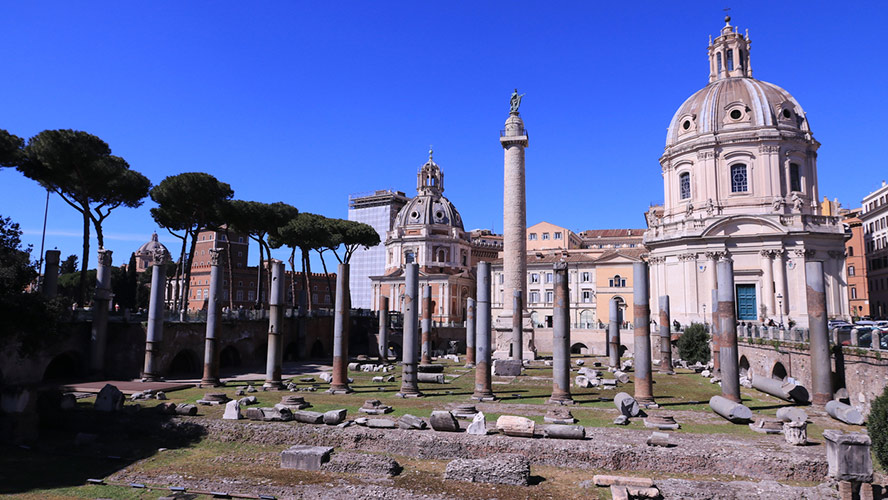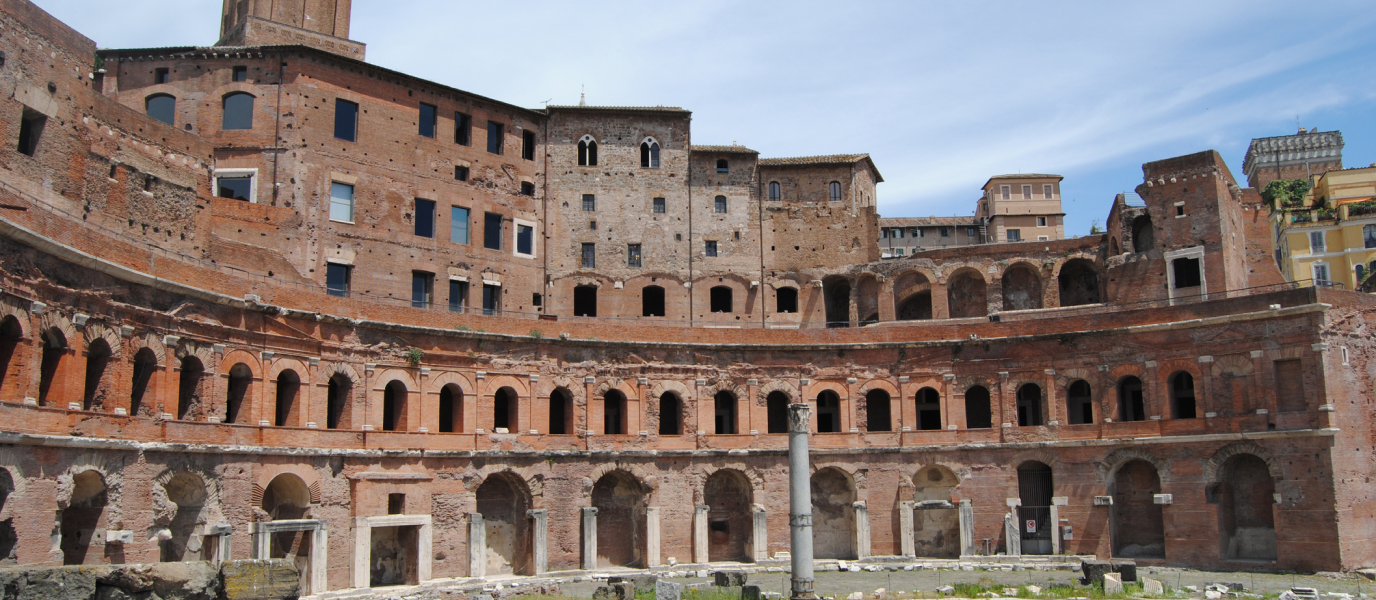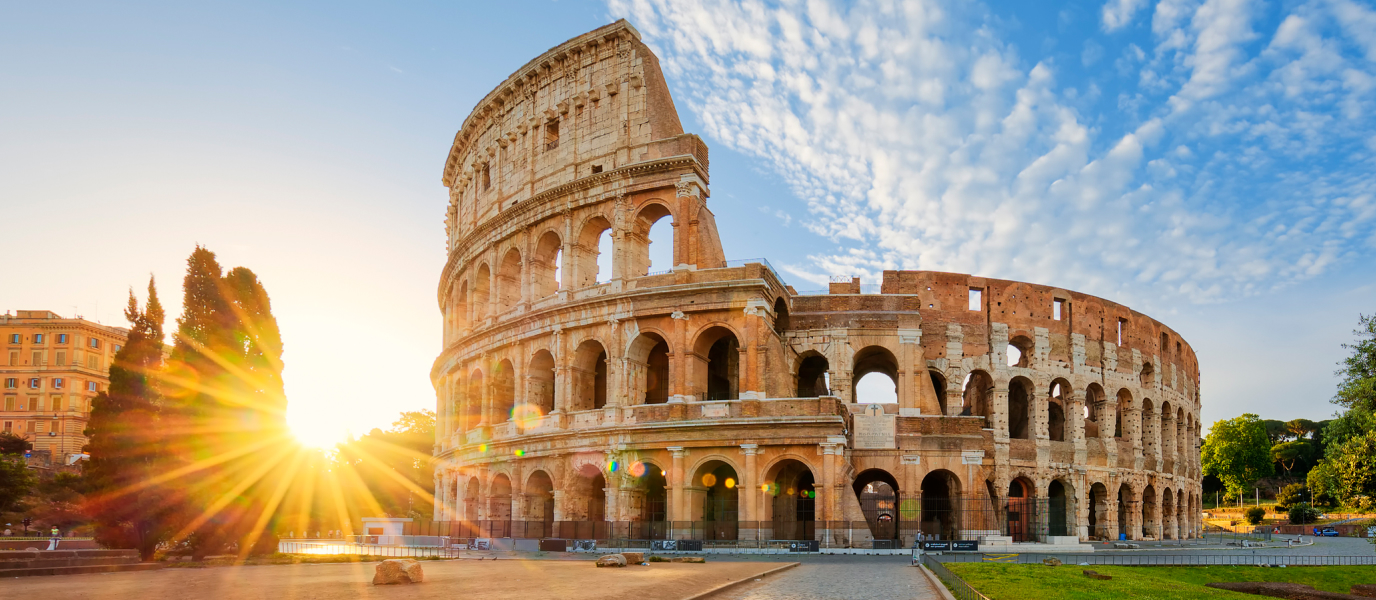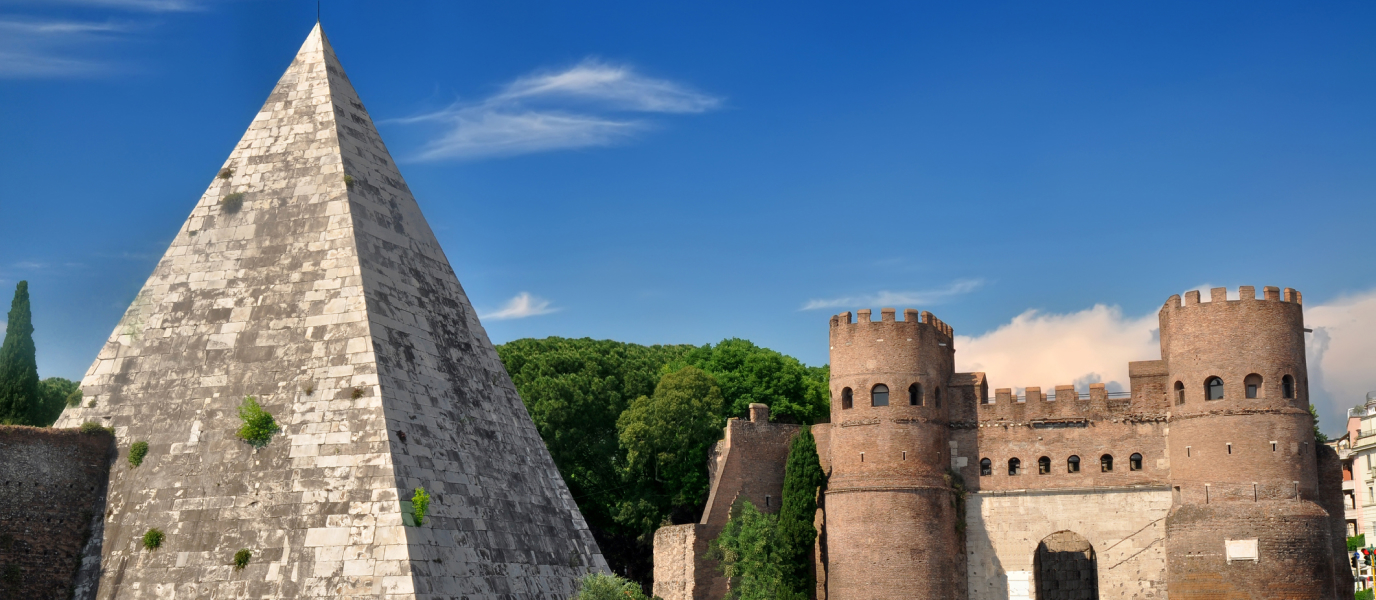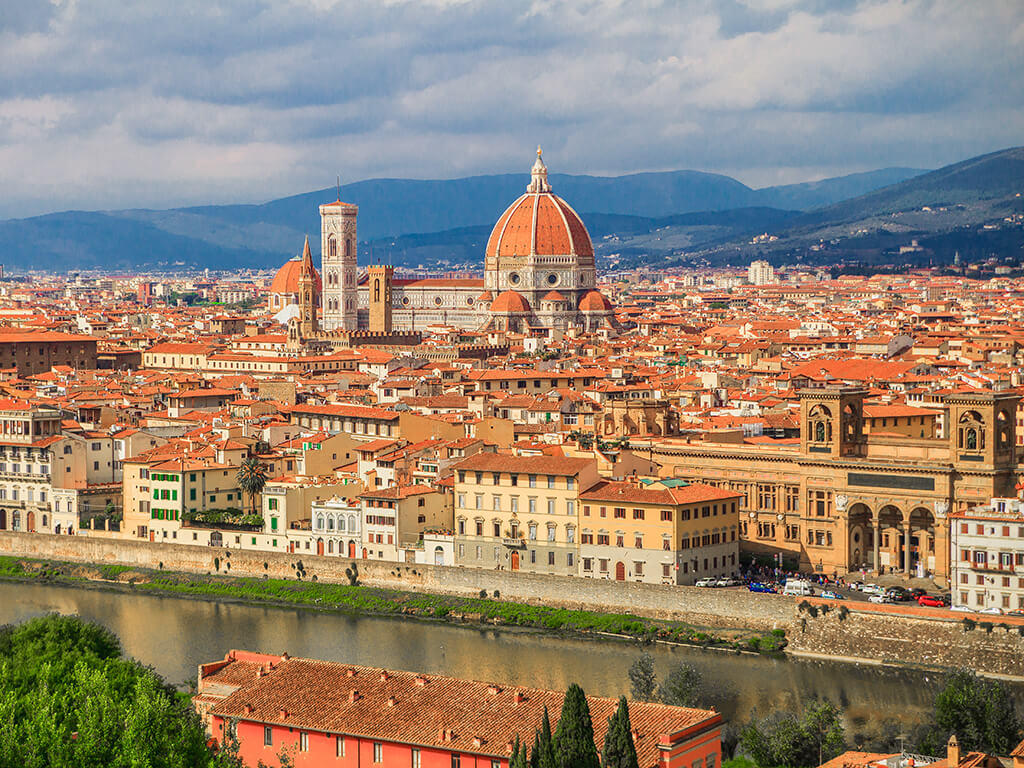At the time of the Roman Empire, Trajan’s market consisted of a large number of shops spread across a number of different floors. Nowadays, you can get lost in the ruins and let your imagination run wild wondering what it must have been like during its glory days. The Romans were visionaries and this six-floor building is a fine example of what they could achieve. The concept – an indoor establishment with a range of different shops – is one that we still use today.
Trajan’s market was built between the years 100 and 122 AD under the guidance of architect Apollodorus of Damascus, one of Emperor Trajan’s confidants. He was the brain behind many of the grand constructions that went up during both Trajan’s reign and also when his adoptive son and successor, Hadrian, took command. The building is made of brick and has terraces overlooking Trajan’s Forum. It is a magnificent example of the fine balance between constructing a building that is both functional and one that is an object of beauty.
Trajan: a good emperor
Marcus Ulpius Traianus is remembered for being one of the best Roman Emperors. Historian Pliny the Younger referred to him as optimus princeps and said that Trajan brought the Roman’s happiness. Available literature highlights his aptitude for battle and governance and the way he cared for his people. He is also remembered for his respect for women since they were not excluded from matters of politics.
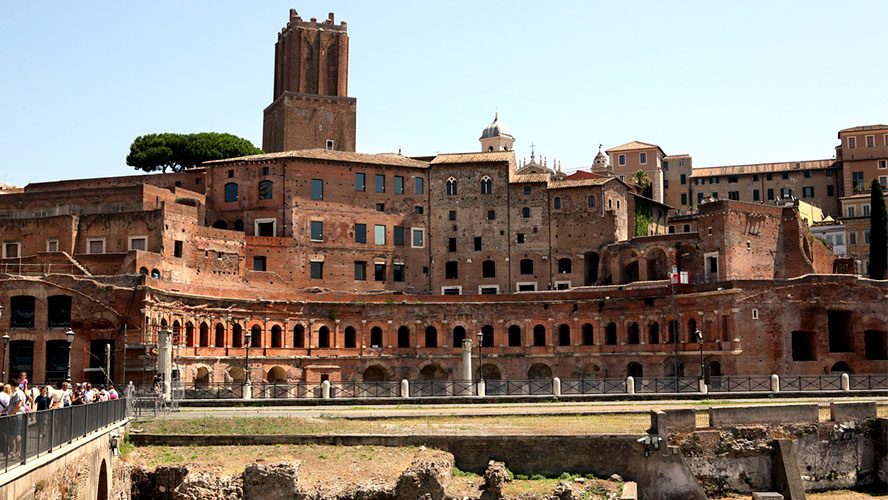
Trajan was born in the Roman province of Baetica, close to modern-day Seville, and, unlike other emperors, he did not inherit the role. Emperor Nerva declared Trajan his successor in the year 98. He had earned himself the position based on personal merit and not family connections.
In 2017, the Museum of Imperial Fora hosted a large exhibition entitled ‘Trajan, Constructing the Empire, Creating Europe’ to commemorate the 1,900th anniversary of his death. The title of the exhibition was a direct reference to one of the outstanding characteristics of his mandate: integration. As emperor, he made a huge contribution towards growing the Roman Empire and helped it to become incredibly powerful. It stretched out over 6.5 million square kilometres, covering modern-day Europe. He did not, however, set out to destroy or control the towns he conquered, but to integrate them.
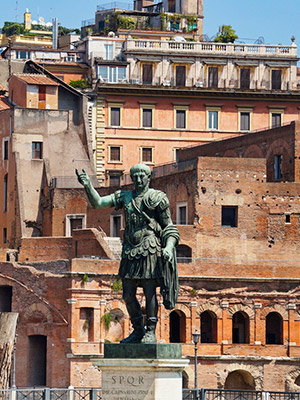
Trajan and public buildings
Trajan managed to unite the Empire on the bases of a common culture and civilian life. He wanted to improve the places he conquered by constructing buildings, pavements, thermal baths, bridges and ports. His legacy includes the bridge over the Danube and the bridge in Alcántara, Spain.
His two decades of rule are characterised by social reform, improved infrastructures and respect for the law. Extending trade was one of the things that motivated him the most. He was also keen on constructing public buildings in Rome, many of which you can still enjoy when you visit Rome today. The Roman Forum and Trajan’s market are just two of them. If you have an understanding of the Emperor’s life and a basic knowledge of that period in history, you will find visits to these places absolutely fascinating.
Trajan’s market: an indoor, public building in Rome
The archaeological remains you can visit today were once Trajan’s market and were uncovered in 1924. This was the year Mussolini commissioned the construction of Via dei Fori Imperiali, and the building work also uncovered a number of medieval and Renaissance homes. The remains from the different eras make for a rich tapestry of history that is typical of Rome.
When you visit the world’s first ever indoor shopping centre, you will find that much of the original building still remains. Apollodorus of Damascus was the project architect and he constructed a building that was large, symmetrical and semi-circular. It was built from brick and had six floors with a terrace. The lower levels were used for shops and customers could buy goods that had been imported from all over the Empire including silk, spices, fruit and fresh fish. The top levels were for leisure activities and housed the library and the Emperor’s administration offices.
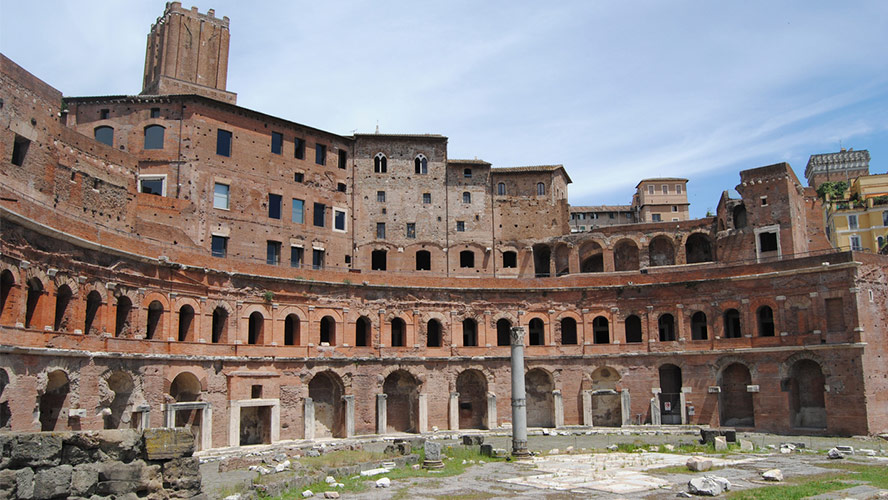
Museo dei Fori Imperiali: exhibitions in Trajan’s market.
You will find the Museo dei Fori Imperiali (the Museum of Imperial Fora) inside Trajan’s market. You can visit the different parts of the market that still remain today. It’s quite a labyrinth. You can also visit several exhibitions and delve deep into key elements of the Roman Empire.
Admire the remains from Via Alessandrina or take a journey into the past by visiting the museum. Your thirst for knowledge will be thoroughly quenched with the fascinating models, videos and information panels that recreate the fora and tell the story of the changes that have taken place over time.
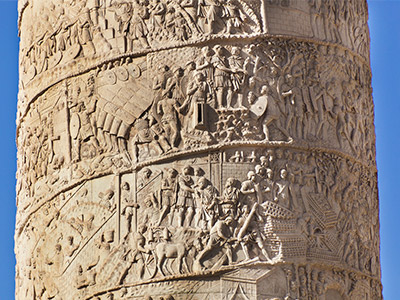
The legacies of Caesar, Augustus, Nerva and, of course, Trajan can all be found amidst the ruins. They all made key contributions towards the political and administrative core of the Empire.
Trajan’s column: a monument to victory
Trajan’s Forum is very close to Piazza Venezia as you head towards the Colosseum along Via dei Fori Imperiali. It is famous for having been built out of concrete to ensure its rapid construction. However, Trajan’s Column is what makes this place particularly special. You will see that it still remains in excellent condition today.
The marble monument is thirty-eight metres tall and its base once housed the ashes of both Trajan and his wife, Plotina. It has 135 spiral bas reliefs commemorating Trajan’s victories in Dacia (now Romania) between 98 and 105 AD.
At the time, it was part of the Basilica Ulpia which was divided into five different naves with marble and gilded bronze roof tiles. Unfortunately, the Basilica was plundered during the Middle Ages leaving little more than a few columns and part of the marble floor.
The Temple of Trajan: a tribute
The ruins of the Temple of Trajan are also in Trajan’s Forum. It is often referred to as the Temple of Divine Trajan and Plotina. It was built in honour of the Emperor and his wife who died in 117 and 124, respectively. Their adoptive son and successor, Hadrian, built the temple in their memory.
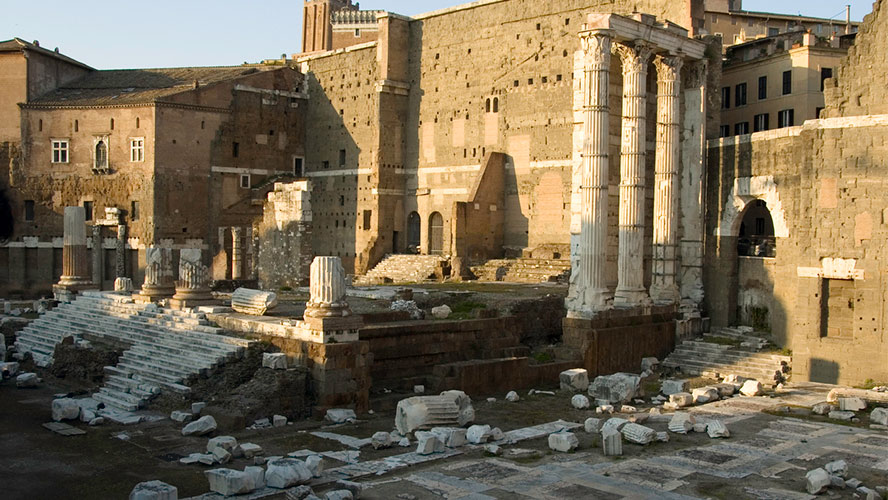
The temple was destroyed during the Middle Ages and has only recently been uncovered from amongst the ruins. Archaeological studies indicate that it was very large indeed. It had seven rooms and columns positioned on top of tall, decorative bases. The design may well have been based on the nearby Temple of Antonio and Faustina.
